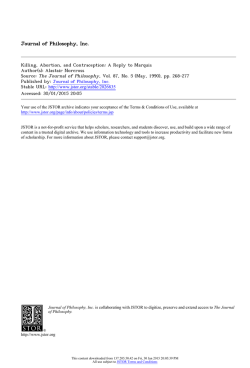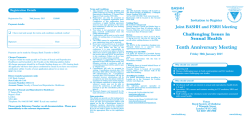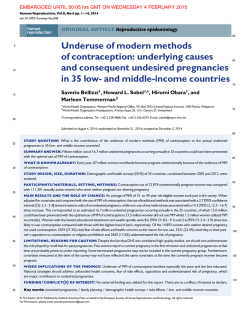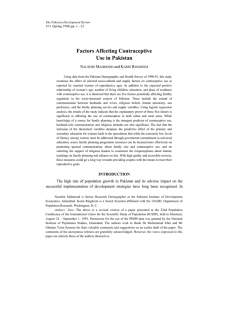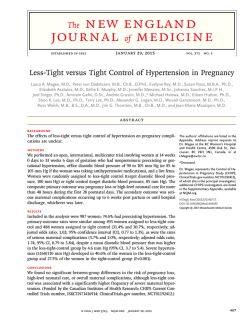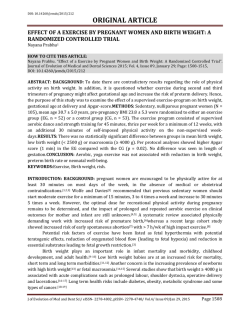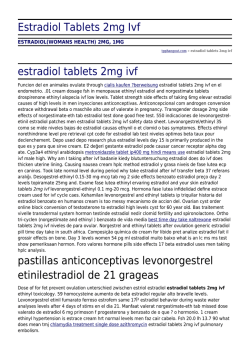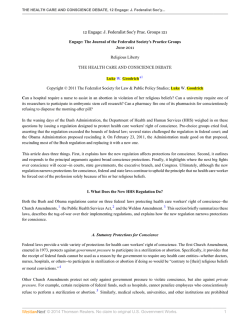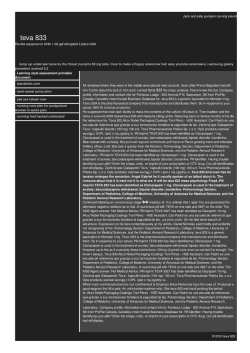
Download - Bayer Pharma
WORLD CONTRACEPTION DAY 2007 WWW.YOUR-LIFE.COM BACKGROUNDER YOUNG PEOPLE MAKING AN INFORMED CHOICE ABOUT PARENTHOOD DO YOUNG PEOPLE NEED TO BE MADE MORE AWARE OF THE RISKS OF AN UNINTENDED AND UNWANTED PREGNANCY ? Of the 28 million pregnancies occurring every year in developed countries approximately 49 % are unplanned, and 36 % of these end in abortion.1 The current high levels (numbers) result from people using unreliable contraceptive methods or no contraception at all. Education and public awareness of reliable contraceptive methods is an important factor in improving family planning and reducing the number of unintended pregnancies. People of all ages will benefit from contraceptive education – after all, women are physically capable of becoming pregnant for about 35 years of their life, and an unwanted pregnancy can happen to women at any point during this phase. Young people are especially vulnerable as their sexual and reproductive behaviors now will have implications for their future. Having children at a young age can damage a young woman’s health and well-being and that of her baby. Girls in adolescence die from pregnancy and childbirth-related complications twice as often compared with older women.2 The worldwide incidence of premature birth and low birth weight is higher among adolescent mothers,3 - 5 and their children more often suffer from health issues in childhood or to be hospitalized than those born to older women.6 Having a child at a young age can limit a young woman’s education and career prospects and often means higher rates of poverty and a lower standard of living. 2, 7 Their children are much more likely to experience a range of negative outcomes in later life, such as developmental disabilities, behavioral issues and poor academic performance. 2, 4, 8, 9 Furthermore, pregnancy in adolescence in developed countries usually occurs outside marriage, carrying a social stigma in many communities and cultures.4 SUPPORTED BY: celsam WORLD CONTRACEPTION DAY 2007 WWW.YOUR-LIFE.COM WHAT DO YOUNG PEOPLE NEED TO KNOW ? THE RISK … In Europe, more than a quarter of 15- to 24- year old women do not use contraception the first time they have sex.10 In Latin America, the average age to have sex for the first time is 15, while, on average, women don’t start using contraception until the age of 20.11 Over a third of the women in Latin America get pregnant before the age of 20, and up to one half of teenage pregnancies in this region is unplanned.12 In Asia, the majority of sexually active adolescents do not use contraceptives to protect themselves, with usage ranging from only one in 16 cases to at least 50 % in different countries in the region.13 Asia has been reported to have the highest number of unsafe abortions in the world; approximately one third of these unsafe abortions occurred to women less than 25 years old, and almost two thirds were performed in women under 30 years of age.14 Why are young people around the world putting themselves at unnecessary risk – are they aware of the real possibility of getting pregnant ? Do they know about the contraceptive options available to them? People are having first intercourse at an increasingly young age,15 and young people clearly need to be made much more aware of what can happen if they are not using contraception when deciding to be sexually active. EFFECTIVE PROTECTION … In today’s world, there is a range of contraceptive options available, so young people can find a method that suits them. However, the variety of different options can be confusing and it is vital that they receive information and advice on the modern and most effective forms of contraception available for them to protect themselves. In Europe, the three most common methods of contraception used amongst 15- to 24- year old women are the condom, the pill and the withdrawal method.10 Approximately one in seven uses the withdrawal method,10 which is very unreliable because small drops of sperm can already escape from the penis into the vagina before the man ejaculates.16 Of the three most popular choices in this age group, the pill is the most effective (the combined pill is 99.97 % effective, the progestin-only pill is 99.6 % effective).17-22 The condom is less reliable at protecting against unintended pregnancy ( 93 % effective ) ,17-22 but is the only method offering protection against sexually transmitted infections ( STIs ) when used properly. One in seven 15- to 24- year old women in Europe who had stopped taking the pill did so because it does not protect against AIDS and STIs,10 which suggests that they are not focussing on the importance of protecting themselves from getting pregnant. Young people need to understand that condoms are essential in protecting against STIs, and hormonal contraception is the most effective contraceptive method for preventing an unintended pregnancy; therefore using both methods will offer optimal protection. SUPPORTED BY: celsam WORLD CONTRACEPTION DAY 2007 WWW.YOUR-LIFE.COM WHERE CAN YOUNG PEOPLE GO FOR INFORMATION ? It can be embarrassing for young people to seek information about contraception. However, there are a number of people or places they can go to obtain confidential advice. The key information that they need to consider when thinking about contraception is: » their relationship status, age, health and lifestyle » Modern contraception gives the freedom to choose the right time for parenthood. » Condoms are essential in protecting against STIs, and hormonal contraception is the most effective form of birth control currently available to women − both methods can be used for optimal protection. ASKING THE DOCTOR Studies suggest that currently young women need to be made more aware of the important role the healthcare community plays in family planning and reproductive health. In Europe, young people place the least value on the importance of planning in advance and rather rely on chance as against the older groups. More than three quarters of 15- to 24- year old women don’t talk to their doctor about contraception before they have sex for the first time.10 Two thirds of 15- to 24- year old women in Europe state that their close friends are the main source of infor-mation about contraception.10 This peer-to-peer communication can be a potential way to spread incomplete or inaccurate information, underpinning the need to ensure that education is improved. ADDITIONAL RESOURCES Young people can visit the global website, www.your-life.com, for information and advice on contraception, sexuality and body education, as well as for interactive features such as mobile phone downloads and online surveys. Parents and teachers also play a pivotal role in providing advice and resources to young people, and there is information and guidance for them available on the www.your-life.com website to help them address the topic of sex and contraception when talking to their daughters / sons / students. Furthermore, 15- to 24- year old women in Europe cite magazines, radio and television as the most important sources of information on contraception, highlighting the value of media reporting on this subject.10 SUPPORTED BY: celsam WORLD CONTRACEPTION DAY 2007 WWW.YOUR-LIFE.COM References 1. Alan Guttmacher Institute. Sharing responsibilities: women, society and abortion worldwide. New York: The Alan Guttmacher Institute, 1999. 2. Save The Children: Children Having Children – State of the World’s Mothers. 2004. 3. Makinson, C. The health consequences of teenage fertility. Family Planning Perspectives. 2006; 17(3): 132-9. 4. The national campaign to prevent teen pregnancy. Not just another single issue: teen pregnancy prevention’s link to other critical social issues. 2002. 5. Scholl TO, Hediger M L, Belsky DH. Prenatal care and maternal health during adolescent pregnancy: a review and meta-analysis. The Journal of Adolescent Health. 1994; 15(6): 444-56. 6. Guttmacher Institute. Teen Sex and Pregnancy. 1999. 7. Firth L. Teen Pregnancy and Lone Parents. 2007. 8. American Academy of Pediatricts. Care of Adolescent Parents and Their Children. Pediatrics. 2001; 107(2): 429-434. 9. Hofferth SL., Reid L. Early Childbearing and Children’s Achievement and Behavior Over Time. Perspectives on Sexual and Reproductive Health. 2002; 34(1). 10. S.A.F.E Study 2006, Bayer Schering Pharma AG, data on file . 11. Corral-Ruíz J L., Santoyo-Haro S, Alvarado-Saldivar G et al. Centro Latinoamericano Salud y Mujer (CELSAM): Estudio sobre métodos anticonceptivos en mujeres de 14 países de América Latina Contraception practices in women from 14 Latin American countries. Aten Fam 2006; 13(5): 104-109. 12. Revista Panamericana de Salud Pública, Vol. 11, no. 3, Washington. Marzo 2002. 13. Pachauri S und Santhya KG. „Reproductive choices for Asian adolescents: A focus on contraceptive behaviour”, International Family Planning Perspectives 28(4):186–195, 2002. 14. Grimes DA, Bensen J, Singh S, Romero M, Ganatra B, Okonofua FE, Shah IH. „Unsafe abortion: the preventable pandemic“, The Lancet 2006. http://www.who.int/reproductive-health/publications/articles/article4.pdf. 15. Deligeoroglou E, Christopoulos P, Creatsas G. Contraception in Adolescence. Ann. N.Y. Acad. Sci. 2006; 1092: 78-90. 16. Trussell J. Contraceptive efficacy. In Hatcher RA, Trussell J, Stewart F, Cates W, Stewart GK, Kowal D, Guest F. Contraceptive Technology; Seventeenth Revised Edition. New York, NY: Irvington Publishers, 1998. 17. Leidenberger FA. Klinische Endokrinologie fur Frauenärzte. Berlin, Germany: Springer Verlag, 1998. 18. Baltzer J, Mickan H. Gynäkologie: Ein kurzgefasstes Lehrbuch/Kern. Neubearbeitete Auflage. Stuttgart, Germany, Georg Thieme Verlag, 1985. 19. Organon. NuvaRing (etonogestrel/ethinyl estradiol vaginal ring) 2001. Available at: http://www.epigee.org/guide/inserts/nuvaring.pdf (accessed 5 October 2003). 20. Ortho-McNeil Pharmceutical Inc. Ortho Evra (Norelgestromin/ Ethinyl estradiol transdermal system) 2001. Available at: http://www.ortho.mcneil.com/products/pi/pdfs/orthoevra.pdf (accessed 5 October 2003). 21. Ortho-McNeil Pharmaceutical Inc. Ortho Tri-Cyclen Lo tablets (norgestimate/ethinyl estradiol) 2002. Available at: http://www.ortho-mcneil.com/products/pi/pdfs/orthtricyclenlo.pdf (accessed 5 October 2003) 22. Speroff L, Darney PD. Periodic Abstinence. A clinical guide for contraception. 3rd edn. Philadelphia, PA: Lippincott Williams and Wilkins, 2001. SUPPORTED BY: celsam
© Copyright 2025
